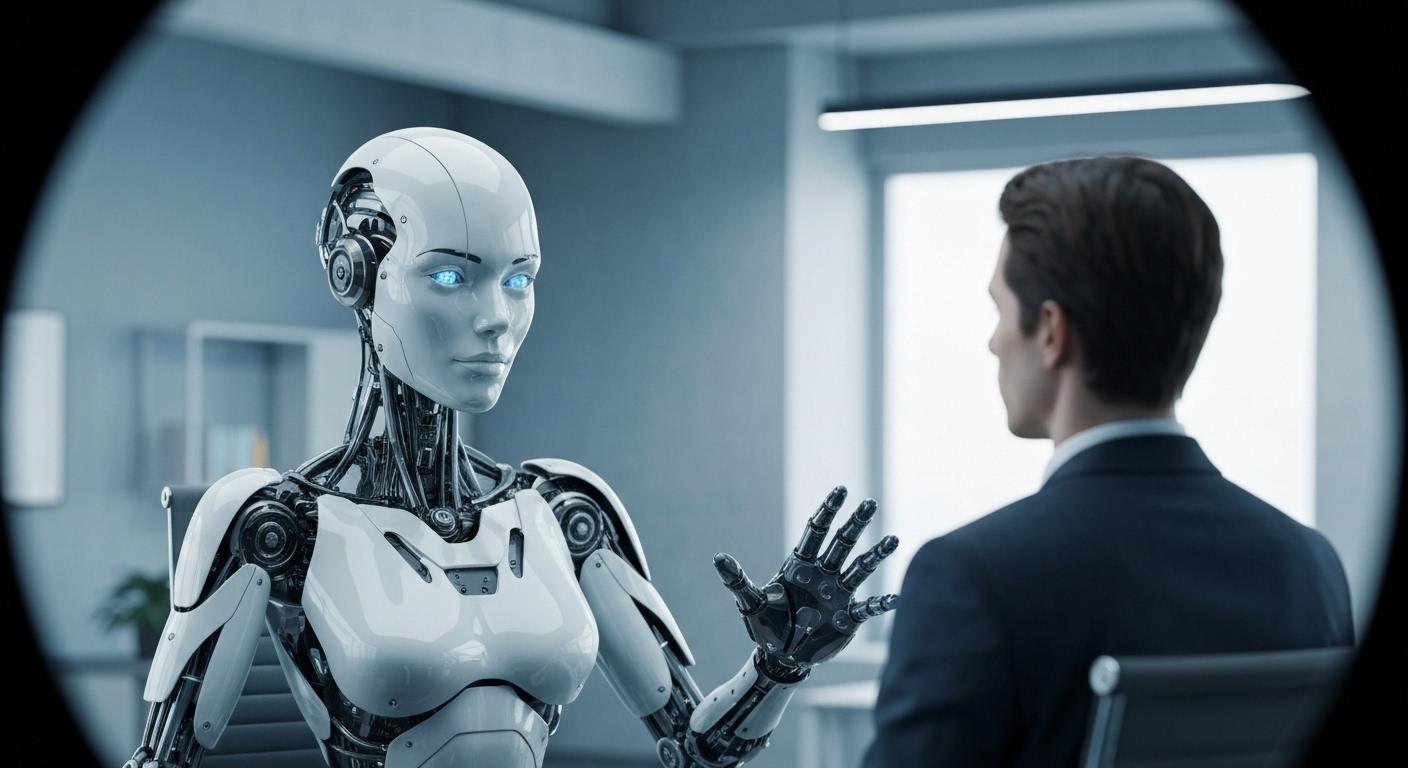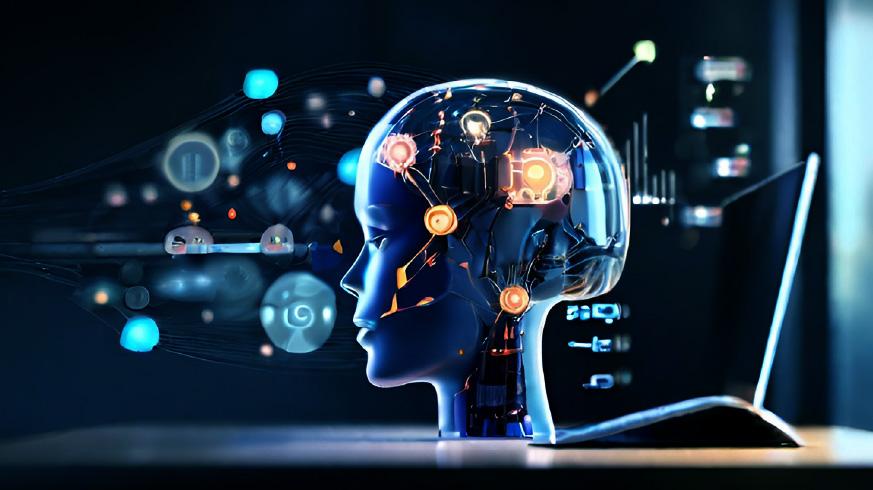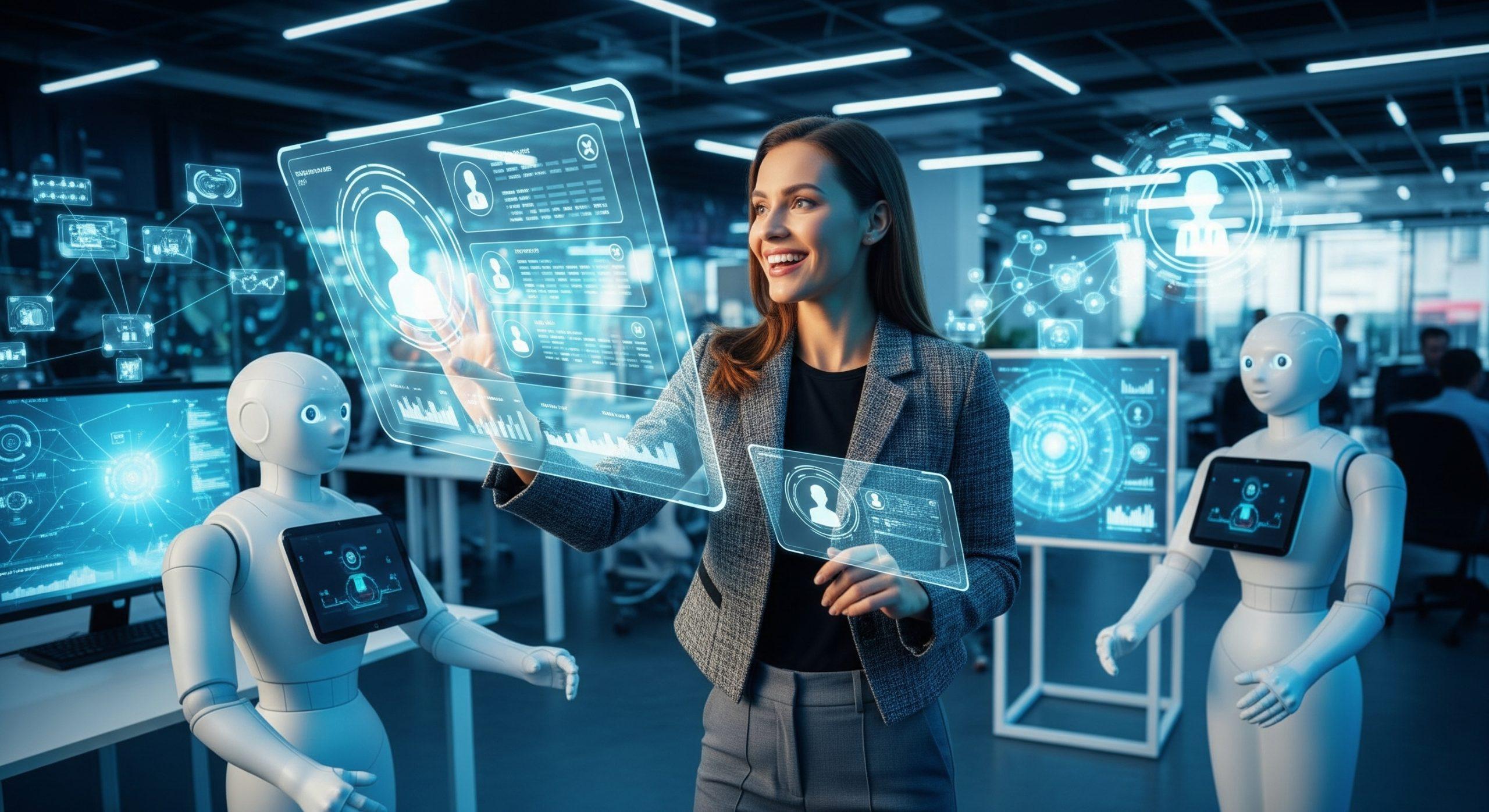Introduction: Why MLOps and ML Engineering Are Merging in 2025
In 2025, the line between MLOps and ML Engineering has nearly vanished.
What was once a clear split between building models and deploying them has evolved into a seamless lifecycle, where engineers are expected to design, automate, and maintain intelligent systems from data to deployment.
This shift isn’t theoretical; it’s visible in every job description at top AI companies.
FAANG, OpenAI, Anthropic, and leading startups are no longer hiring just “model builders.”
They’re hiring end-to-end AI engineers, professionals who understand not only how to train models but how to productionize, monitor, and scale them responsibly.
The 2025 Hiring Shift: From Models to Systems
Five years ago, being an ML Engineer meant knowing algorithms, frameworks, and hyperparameter tuning.
Today, it means knowing how those models survive in the wild, how they handle noisy data, scale to millions of users, and stay reliable through drift and retraining.
Enter MLOps, the discipline that connects code with operations, bringing DevOps principles to the ML world.
In 2025, MLOps isn’t a support function. It’s core infrastructure, and interviewers expect every ML engineer to understand it.
In fact, companies like Google, Meta, and Tesla now explicitly test for MLOps literacy during technical and system design interviews.
They expect candidates to talk confidently about model deployment, CI/CD pipelines, experiment tracking, and observability.
What This Means for You
If you’re preparing for ML interviews in 2025, you can’t afford to stay in a silo.
You need to:
- Understand how ML systems are built, deployed, and maintained at scale.
- Speak fluently about pipelines, orchestration, and monitoring tools.
- Articulate how your models deliver measurable, production-level impact.
This blog will break down what interviewers expect you to know, across both MLOps and ML Engineering, and how to prepare strategically to stand out in this hybrid landscape.
By the end, you’ll know exactly where to focus your learning, how to align your portfolio, and how to position yourself as a next-generation ML professional in the AI-driven hiring era.
Section 1: The Evolution of ML Roles-From Research Labs to Real-World Systems
The story of machine learning roles over the past decade is a story of transformation.
In the early 2010s, ML engineers were largely research translators, they turned cutting-edge papers into prototypes.
Their success was measured by accuracy metrics on benchmarks, not production performance.
But as AI began powering billions of user interactions, from Netflix recommendations to Tesla’s self-driving stack, the focus shifted dramatically.
Suddenly, ML engineers weren’t just model tinkerers. They became builders of intelligent systems that had to operate at planetary scale.
The 2018–2022 Phase: The Rise of ML Engineering
During this phase, companies like Google, Meta, and Amazon began formalizing the role of ML Engineer.
The expectation: combine the rigor of data science with the craftsmanship of software engineering.
These engineers designed model pipelines, managed feature stores, and collaborated closely with data and infra teams.
Their north star? Delivering models that made it into production.
However, as model complexity grew, along with infrastructure sprawl, the industry faced new challenges: reproducibility, scalability, and cost optimization.
That’s when MLOps began to rise.
2023–2025: The Convergence Era
Fast-forward to today, and the lines have blurred.
Modern ML Engineers are expected to:
- Deploy models via CI/CD pipelines.
- Automate retraining through workflow orchestration tools (like Airflow or Kubeflow).
- Monitor for drift and performance decay.
- Collaborate with DevOps and data engineering teams to ensure seamless integration.
Conversely, MLOps professionals are no longer purely infrastructure specialists.
They’re learning ML fundamentals, evaluation metrics, feature drift detection, and model retraining logic.
The result? A new hybrid profile: engineers who can move fluidly between data, modeling, and deployment.
Why This Matters for Interviews
FAANG interviewers in 2025 won’t ask, “Are you an ML engineer or an MLOps engineer?”
They’ll ask,
“Can you take an ML system from idea to production, and keep it performing reliably?”
This hybrid expectation is now standard in hiring loops.
As pointed out in Interview Node’s guide “Why ML Engineers Are Becoming the New Full-Stack Engineers”, top candidates demonstrate an understanding of both the experimental and operational lifecycle of machine learning, showing mastery across data, models, and infrastructure.
Section 2: What MLOps Actually Means in 2025-The Backbone of Modern AI Systems
By 2025, MLOps has evolved from a niche buzzword to a critical engineering discipline that underpins every production-grade AI system.
It’s no longer just about model deployment; it’s about making machine learning work reliably, repeatedly, and responsibly in real-world environments.
Think of MLOps as the connective tissue between research and production.
It ensures that the models built by ML engineers don’t just perform well once, they perform well continuously, under dynamic conditions and changing data distributions.
a. The 2025 Definition of MLOps
In simple terms, MLOps is the application of DevOps principles to machine learning workflows, with an added layer of complexity: data and models that constantly evolve.
It combines:
- Automation: End-to-end orchestration of data prep, training, and deployment.
- Reproducibility: Ensuring that models trained months apart can produce consistent results.
- Scalability: Handling massive datasets and distributed systems efficiently.
- Observability: Monitoring model health, data drift, and performance in real time.
The role’s focus has shifted from just “deployment engineers” to AI reliability engineers, professionals who ensure ML systems remain robust post-launch.
b. The MLOps Tech Stack (2025 Edition)
Interviewers expect candidates to be conversant in at least parts of the modern stack:
- Pipelines & Orchestration: Airflow, Kubeflow, Flyte, Metaflow
- Model Management: MLflow, TFX, Sagemaker, Vertex AI
- Monitoring & Drift Detection: EvidentlyAI, Arize, WhyLabs
- Infrastructure & Scaling: Docker, Kubernetes, Ray, Spark
You don’t need to be an expert in all, but interviewers will test your understanding of how these tools connect the ML lifecycle.
c. Why MLOps Is No Longer Optional
In 2025, every AI-driven company depends on reliability, not novelty.
As models enter production faster, issues like data drift, bias, and model decay can create business and ethical risks.
MLOps is how organizations maintain control.
That’s why FAANG recruiters now assess MLOps literacy even for core ML engineering roles, ensuring candidates understand the end-to-end flow from data ingestion to post-deployment monitoring.
As emphasized in Interview Node’s guide “The Rise of ML Infrastructure Roles: What They Are and How to Prepare”, companies that scale AI responsibly rely on engineers who treat deployment, testing, and maintenance as first-class citizens in the ML lifecycle.
Section 3: ML Engineering-Still the Creative Core
While MLOps builds the rails, ML Engineering still drives the engine.
It remains the most creative and intellectually dynamic part of the AI workflow, the part where engineers transform data into intelligence.
Despite the rise of MLOps automation, companies still rely on ML engineers to design, experiment, and deliver value through models that solve real-world problems.
If MLOps ensures stability, ML engineers ensure innovation.
a. The Role of ML Engineers in 2025
ML engineers are responsible for the end-to-end creation of machine learning systems, from data analysis to model optimization to production handoff.
They work at the intersection of research, data science, and engineering, translating abstract goals into measurable, deployable results.
Their daily work revolves around:
- Feature Engineering: Building the right signals from noisy data.
- Model Experimentation: Evaluating architectures, hyperparameters, and metrics.
- Integration: Working closely with MLOps teams to deploy and monitor models.
- Impact Analysis: Quantifying how models affect business KPIs, latency, conversion, retention, or revenue.
In short, ML engineers bridge intelligence and utility.
b. The Modern Skill Stack
Interviewers in 2025 expect ML engineers to go beyond scikit-learn and TensorFlow.
They want professionals who can:
- Build end-to-end data pipelines using Spark or Ray.
- Optimize training for large-scale datasets.
- Integrate models with APIs or streaming systems.
- Understand trade-offs between model complexity, cost, and interpretability.
For example, at companies like Pinterest or Netflix, engineers are asked about model retraining strategies and A/B testing frameworks, not just loss functions.
They’re expected to discuss why a model succeeded, not just how it was built.
c. The Creative Edge in ML Engineering
The best ML engineers bring a product mindset, they don’t just train models; they solve user problems.
That’s what makes this role distinct from MLOps.
It’s creative, hypothesis-driven, and experiment-heavy.
In interviews, candidates who can articulate how their models delivered measurable value, improving click-through by 15% or reducing latency by 30%, stand out immediately.
As highlighted in Interview Node’s guide “End-to-End ML Project Walkthrough: A Framework for Interview Success”, interviewers love when candidates narrate their workflow as a story, from data understanding to real-world deployment and performance outcomes.
Section 4: The Key Overlaps Between MLOps and ML Engineering
By 2025, MLOps and ML Engineering are no longer separate lane, they’re interlocking gears in a continuous AI production cycle.
In interviews, hiring managers no longer ask, “Are you an MLOps engineer or an ML engineer?”
They ask:
“Can you build machine learning systems that deliver consistent, measurable results end to end?”
The truth is, most modern AI organizations now expect engineers to be conversant in both roles, because scalability, automation, and reliability depend on tight integration between modeling and infrastructure.
a. Shared Skills and Responsibilities
While their day-to-day focuses differ, both MLOps and ML engineers share core competencies:
- Data Pipelines: Both design and manage robust data ingestion and feature pipelines.
- Experiment Tracking: Both use tools like MLflow or Weights & Biases to ensure reproducibility.
- Model Monitoring: Both teams track performance metrics, data drift, and latency.
- Automation and CI/CD: Both rely on deployment pipelines that automate retraining and testing cycles.
- Cross-Functional Collaboration: Both roles liaise with data scientists, backend engineers, and product teams.
In fact, many hiring loops now feature joint evaluation sessions, where interviewers gauge how well candidates can navigate dependencies between the two functions.
b. Why This Overlap Matters in Interviews
Modern AI products demand systemic thinking.
An ML engineer who doesn’t understand versioning or CI/CD can’t productionize models efficiently.
An MLOps engineer who can’t interpret ROC curves or feature drift signals can’t optimize the system meaningfully.
That’s why companies like Google, Meta, and Anthropic test both dimensions in interviews:
- MLOps candidates are asked about model lifecycle management.
- ML engineers are asked how they’d monitor and retrain deployed models.
Strong candidates seamlessly connect both, showing not just what they can build, but how they can sustain performance at scale.
c. The Hybrid Engineer: The Future Standard
The future belongs to the hybrid ML professional, someone who merges experimentation with infrastructure.
This hybridization is particularly valuable in lean AI teams, startups, or scaling organizations, where one person often handles multiple lifecycle stages.
As explained in Interview Node’s guide “Quantifying Impact: How to Talk About Results in ML Interviews Like a Pro”, interviewers increasingly prioritize candidates who demonstrate end-to-end accountability, those who understand not only how models work, but how they create measurable business value once deployed.
This convergence marks a fundamental shift: ML engineers are no longer just modelers, and MLOps specialists are no longer just platform enablers, they’re becoming partners in the same AI delivery ecosystem.
Section 5: What Interviewers Expect You to Know in 2025
If you’re interviewing for ML roles in 2025—whether titled “Machine Learning Engineer,” “MLOps Engineer,” or even “AI Infrastructure Engineer”, you’ll notice something strikingly consistent: interviewers aren’t testing for job titles anymore.
They’re testing for systems thinking, your ability to design, deploy, and maintain AI at scale.
Top companies like Google, Meta, Amazon, and Anthropic want candidates who understand the entire machine learning lifecycle.
You don’t have to be a DevOps expert or a Kaggle champion, but you must be fluent in how each part connects: data → model → deployment → monitoring → iteration.
a. The New ML Skill Matrix (2025)
Here’s what hiring teams now expect you to demonstrate in technical and system design interviews:
| Category | ML Engineer Focus | MLOps Focus | Why It Matters |
| Data Management | Feature extraction, data validation | Data ingestion, ETL pipelines | Models fail if data isn’t reliable |
| Experimentation | Model design, tuning, evaluation | Experiment tracking, versioning | Reproducibility = reliability |
| Deployment | Model packaging, REST/gRPC APIs | CI/CD, containerization, orchestration | Scalability and rollback |
| Monitoring | Performance metrics, drift detection | Observability tools, alerting | Maintains trust and uptime |
| Optimization | Model compression, inference tuning | Cost, latency, and compute efficiency | Real-world constraints |
In short, both roles are two halves of a single system, and interviewers are looking for engineers who see that whole system clearly.
b. What Interviewers Actually Test For
Across FAANG and AI-first interviews, expect questions that reveal:
- End-to-End Awareness: Can you describe how a model moves from prototype to production?
- Trade-Off Thinking: How do you balance accuracy vs. latency, interpretability vs. scalability?
- Ownership: Can you identify, measure, and communicate model impact?
- Resilience: How do you handle data drift or pipeline failures in production?
At companies like Google Cloud AI and Amazon AI, interviews now include hybrid system design questions:
“Design a retraining pipeline that updates models weekly based on user feedback, how do you ensure reproducibility and minimize downtime?”
The best candidates don’t just give diagrams; they explain why each decision matters for real-world reliability.
c. The Non-Technical Expectation: Communication
Perhaps the biggest evolution in 2025 hiring?
Interviewers expect engineers to communicate like product partners, not just coders.
You should be able to explain your ML system in plain English, linking technical design to business value.
Example:
“Our retraining automation reduced model latency by 18%, improving ad relevance and CTR by 6%.”
Clear, concise, outcome-driven communication is the new differentiator.
d. What Great Candidates Do Differently
They:
✅ Speak in systems, not silos.
✅ Tie metrics to measurable outcomes.
✅ Mention tools only when relevant to context.
✅ Show excitement about solving messy, real-world challenges.
As explained in Interview Node’s guide “Career Ladder for ML Engineers: From IC to Tech Lead”, mastery today means showing breadth of collaboration and depth of ownership, the exact qualities hiring panels equate with future tech leaders.
Section 6: Technical Interview Questions by Role-How Depth and Context Define Success
Once you’ve demonstrated that you understand the ML lifecycle conceptually, your next challenge is to prove technical depth.
In 2025, MLOps and ML Engineering interviews have evolved, they now assess how well you connect design, code, and operations rather than isolated technical trivia.
Hiring managers want to see whether you can reason through complex systems under constraints, scalability, cost, latency, and reliability.
That’s where the technical rounds come in.
a. Typical ML Engineering Questions (FAANG-Style)
ML Engineers are tested for problem-solving and system intuition, focusing on modeling, data pipelines, and product impact.
Here are some representative examples:
- “Design a recommendation system for a streaming platform.”
- Interviewers look for: user embedding strategies, candidate retrieval, personalization loops, A/B testing.
- “You’re given a highly imbalanced dataset. How would you handle it?”
- They expect discussion of sampling techniques, weighted loss functions, and evaluation metrics (F1, ROC, precision-recall).
- “How do you deploy a model that updates weekly?”
- They’ll assess how you manage retraining, versioning, rollback, and data validation.
- “How do you debug a model that performs well offline but poorly in production?”
- Great candidates discuss distribution shift, pipeline drift, monitoring, and feature leakage.
- “What metrics do you track post-launch?”
- Look for mentions of latency, inference cost, model drift, and downstream business KPIs.
These questions reveal your ability to think through the full lifecycle, from data collection to measurable business value.
b. Typical MLOps Interview Questions
MLOps interviews, in contrast, emphasize scalability, reliability, and orchestration.
Here’s what you might encounter:
- “How would you automate retraining for a production model?”
- Expect to explain CI/CD workflows, DAG orchestration (Airflow, Flyte), and version control for both data and models.
- “Describe an architecture for monitoring model drift in real time.”
- Strong answers mention statistical drift detection, logging, alert systems, and human-in-the-loop workflows.
- “How do you ensure reproducibility across environments?”
- Mention Dockerization, environment pinning, MLflow tracking, and data versioning (DVC).
- “How would you scale training on large datasets?”
- Cover distributed training (Ray, Horovod), sharding strategies, and checkpointing.
- “Explain your incident response strategy for model degradation.”
- They’ll look for rollback automation, monitoring thresholds, and retraining triggers.
c. The Key to Acing These Rounds
Whether you’re answering ML or MLOps questions, your success depends on one skill:
Framing complexity as structured decision-making.
Interviewers want to hear how you prioritize, how you balance accuracy vs. performance, or innovation vs. maintainability.
Don’t over-index on jargon; instead, narrate your thinking:
“Given our latency constraints, I’d start with approximate nearest neighbors instead of a transformer-based model. That trades a bit of accuracy for faster recommendations.”
That’s what senior-level reasoning sounds like.
As explained in Interview Node’s guide “Crack the Coding Interview: ML Edition by InterviewNode”, top candidates stand out not by dumping tool names but by demonstrating reasoning under real-world trade-offs, exactly how FAANG interviews are now structured.
Section 7: How to Prepare Strategically-Building Hybrid Readiness
By 2025, ML interviews aren’t just testing what you know, they’re testing how well you can connect the dots across the AI lifecycle.
That’s why the best preparation strategy isn’t about mastering endless tools; it’s about cultivating hybrid fluency, the ability to think like both an ML Engineer and an MLOps Engineer.
You need to prepare for interviews the same way great AI systems are built: iteratively, holistically, and grounded in feedback.
a. Step 1: Clarify Which Role You’re Targeting
Even though ML Engineering and MLOps overlap, companies still differentiate expectations slightly:
- If you’re interviewing for ML Engineering, lean into experimentation, feature design, and model impact.
- If you’re targeting MLOps, emphasize reliability, automation, and scalability.
But, and this is key, you must show awareness of the other side.
An ML Engineer who can talk CI/CD pipelines will impress.
An MLOps Engineer who can discuss ROC curves and model bias will stand out.
b. Step 2: Build a Portfolio That Bridges Both
In today’s market, nothing boosts credibility like an end-to-end ML project that demonstrates production awareness.
Here’s how to frame one:
- Problem Definition: A real-world use case (e.g., fraud detection).
- Model Development: Clear experimentation and metrics.
- MLOps Integration: CI/CD pipeline, monitoring, retraining automation.
- Results: Measurable business or performance impact.
This shows you understand not just the “what” but the “how” of scalable ML.
If you’ve done this work, highlight it in interviews, it signals senior-level thinking.
c. Step 3: Simulate Real Hiring Loops
Preparation should go beyond LeetCode or notebooks.
Run mock ML interviews that combine technical, system design, and behavioral questions.
The goal: train your reasoning, not just your recall.
Use tools like InterviewNode’s AI-powered interview simulator, which mimics full FAANG-style loops, coding, design, and cross-functional rounds, and gives granular feedback on your technical reasoning and communication.
Section 8: The Future of MLOps and ML Engineering-Convergence and Automation
The boundary between MLOps and ML Engineering is vanishing faster than ever.
By 2025, companies aren’t hiring these roles in isolation, they’re hiring AI lifecycle engineers who can handle experimentation and operations, innovation and reliability.
The rise of AI-driven automation, agentic systems, and self-healing pipelines is transforming both disciplines.
The future will reward engineers who can combine human creativity with operational precision.
a. Automation Will Redefine Workflows
Emerging tools now automate large portions of the ML lifecycle:
- AutoML frameworks generate baseline models and tuning strategies.
- AI agents monitor pipeline health, detect anomalies, and trigger retraining automatically.
- Dynamic infrastructure scaling optimizes compute allocation based on usage.
This means the next generation of MLOps and ML engineers will focus less on manual orchestration and more on meta-systems, systems that manage other systems.
Engineers will be judged by how well they can design feedback loops that make AI pipelines autonomous yet auditable.
b. The Rise of “Agentic” MLOps
In 2025, the industry is seeing the birth of agentic MLOps, where intelligent agents continuously optimize pipelines based on performance data.
For example, drift detection systems now auto-trigger retraining or alert human reviewers when anomalies occur.
In interviews, expect forward-thinking companies like Anthropic and Google DeepMind to test how you reason about AI governance, human oversight, and automated quality assurance.
Candidates who can talk about responsible automation, balancing control and flexibility, will lead the next wave of AI infrastructure careers.
c. The Future Hybrid Role: ML Systems Architect
The long-term direction is clear: roles will converge into a unified discipline of ML Systems Architecture, blending data engineering, MLOps, and model development.
These engineers won’t just code models; they’ll design resilient ecosystems where AI evolves safely and efficiently.
As highlighted in Interview Node’s guide “The Future of ML Interview Prep: AI-Powered Mock Interviews”, the hiring process itself is also evolving.
AI-driven simulations now train engineers to think like full-stack ML professionals, developing reasoning, communication, and decision-making that mirror the expectations of tomorrow’s tech leaders.
Section 9: Conclusion-Becoming the Hybrid ML Professional Every Company Wants
The distinction between MLOps and ML Engineering is fading, and what’s emerging in its place is a new kind of professional —
the hybrid ML systems engineer, fluent in both experimentation and execution.
In 2025, companies are no longer hiring for roles in silos. They’re hiring for end-to-end impact.
They want engineers who can:
- Train a model that delivers value,
- Deploy it safely into production,
- Monitor and iterate on it at scale,
- And communicate its outcomes to both technical and business audiences.
These hybrid engineers are the glue between AI research and operational excellence, and they’re the ones landing the top offers.
a. The Ultimate Takeaway: Breadth with Depth
The modern hiring loop isn’t about being a specialist or generalist, it’s about being both.
You need to show depth in your craft (ML or infrastructure) but also breadth across the lifecycle.
That means you should be able to:
- Discuss the mathematical intuition behind your models and how you’d monitor them.
- Explain how you tune hyperparameters and deploy models via CI/CD pipelines.
- Highlight production reliability and real-world results.
Top interviewers in 2025 assess not just what you know, but how your thinking scales with complexity.
b. The Interviewer’s Mindset
When FAANG or AI-first interviewers evaluate you, they’re silently asking:
“If I gave this engineer an ambiguous AI problem, could they own it end-to-end, from idea to production, without dropping quality?”
That’s the “ownership signal” that wins offers.
Your portfolio, projects, and interview stories should all point to that same narrative:
you deliver intelligent systems that endure.
c. How to Keep Up with the Future
The pace of ML tooling is accelerating, but the principles stay constant: reliability, reproducibility, and responsible automation.
To stay ahead, focus on:
- Learning frameworks, not just tools. Understand the why behind architectural decisions.
- Building production-grade projects. Show you can operationalize ML systems at scale.
- Practicing communication. Explain your work like a partner, not just an implementer.
d. The InterviewNode Advantage
Interview Node’s ecosystem is designed exactly for this new world.
Through AI-powered mock interviews, custom prep tracks, and expert coaching, you’ll build the exact skills modern interviewers seek:
- End-to-end pipeline reasoning.
- Clear technical storytelling.
- Strategic trade-off communication.
- Production-first thinking.
As noted in Interview Node’s guide “FAANG Coding Interviews Prep: Key Areas and Preparation Strategies”, success now depends on holistic readiness, not isolated brilliance.
That’s why InterviewNode doesn’t just teach syntax or algorithms; it teaches systems confidence, the mindset and mastery that help you perform consistently across all rounds.
10 Frequently Asked Questions (FAQs)
1. Are MLOps and ML Engineering the same in 2025?
No, but they overlap significantly.
ML Engineers focus more on modeling and experimentation, while MLOps engineers focus on automation, reliability, and scalability.
However, companies now expect both roles to understand the full ML lifecycle.
2. What tools should every candidate know before interviewing?
At minimum: Python, Docker, Kubernetes, MLflow, Airflow/Flyte, and one cloud platform (AWS, GCP, or Azure).
Bonus points for experience with model monitoring tools like Arize or EvidentlyAI.
3. How can I show “end-to-end” experience in interviews?
Use one flagship project that covers the entire pipeline, data preprocessing, model training, deployment, and drift monitoring.
Highlight measurable impact (latency reduced, accuracy improved, etc.).
4. Which round do candidates fail most often?
The system design and behavioral rounds.
Most candidates over-focus on technical coding while neglecting communication, trade-offs, and post-deployment reasoning.
5. How can I prepare for hybrid ML/MLOps roles?
Build projects that combine modeling with automation, for example, a retraining pipeline using Airflow and MLflow.
Then practice explaining it clearly during mock interviews.
6. How much MLOps knowledge does a traditional ML Engineer need?
Enough to understand how models are deployed, versioned, monitored, and retrained.
You don’t have to be an infra expert, just capable of collaborating with one effectively.
7. What kind of coding problems should I expect?
Expect a mix of standard algorithmic challenges and ML-specific ones: data transformations, pipeline building, matrix operations, and system optimization problems.
8. Are behavioral interviews really that important for ML roles?
Absolutely.
For mid- and senior-level engineers, 30–40% of evaluation weight is behavioral, focusing on ownership, collaboration, and impact.
9. What’s the next big skill area for MLOps and ML engineers?
Understanding AI governance and automation ethics, designing systems that not only scale, but do so responsibly.
10. What’s the best way to stay current in this evolving space?
Follow technical communities (like MLOps Community, Hugging Face, and InterviewNode’s AI blog).
Contribute to open-source tools, and keep a living portfolio that evolves with industry trends.
Final Thought
The ML landscape of 2025 doesn’t reward narrow expertise, it rewards adaptive mastery.
To stand out, learn to merge creative modeling with operational excellence.
Whether you call yourself an ML Engineer, MLOps Engineer, or AI Systems Architect, your goal is the same:
to make machine learning work, consistently, ethically, and at scale.






